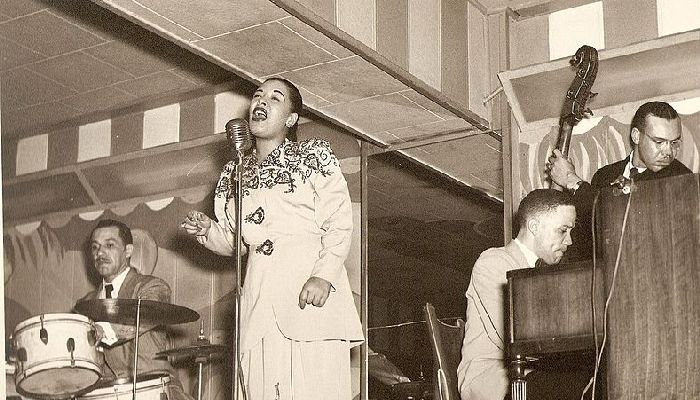Advertisements

The Harlem Renaissance was a major historic event in the African-American community’s life, and it happened during the 1920s.
As the name suggests, it originated in Harlem, New York.
It’s contemporaries named it the “New Negro Movement” as a tribute to the 1925 anthology The New Negro.
Harlem, the area most affected by the Great African-American Migration, that spanned urban areas in the Midwest and the North-east United States.
Despite
The estimated beginning of the Harlem Renaissance is 1918, and its span is considered to reach the mid-1930s. The ideals however never died and continued to empower artist throughout the decades.
The peak of the “flowering of Negro literature”, as it was referred to by James Weldon Johnson, was between 1924 and 1929.
In 1924 there was a gathering for black writers, attended by white publishers. The party was hosted by Opportunity: A Journal of Negro Life. 1929 is the sad year that marks the start of the Great Depression.

Billie Holiday was a
The overt racial pride that characterized the Harlem Renaissance was best represented in the ideal of the New Negro, who by producing art, literature, music, and by show of intellect, will challenge the pervading stereotypes and racism. They will be the voices who can challenge the status quo, to bring forwards socialist ideas and progressive politcs for integration, both social and racial.
Literature and art are tools were thought to be the “tools” to “uplift” the African-Americans.
The Harlem Renaissance was not a way to create a homogeneous art scene for black people – it’s characteristics encompass varying forms of expression – a Pan-African perspective as well as “high-culture”, “low-culture” or “low-life”. Jazz and blues thrived and flourished, grew by the appearance of jazz poetry. Traditional music and literature entwined with modern counterparts that spread through and still affect today’s art born in the US.
The duality,
The most common topics of art during this era were the slavery and the lived experiences of ancestors, the dilemma of catering to an elite white audience, the emerging folk traditions, the identity of being black, and the institutional racism.
Harlem Renaissance opened the door for African Americans, who used literature and music to express their humanity as a rightful demand for equality. Despite the movement being primarily for and by African-Americans, it needed the support of white Americans, whose patronage catalyzed the effect of black patrons and black-owned businesses and supports. White supporters like Charlotte Osgood Mason and Carl Van Vechten aided the movement in several forms, using their influence and connections to help the cause along because they believed in racial equality even a hundred years ago.
